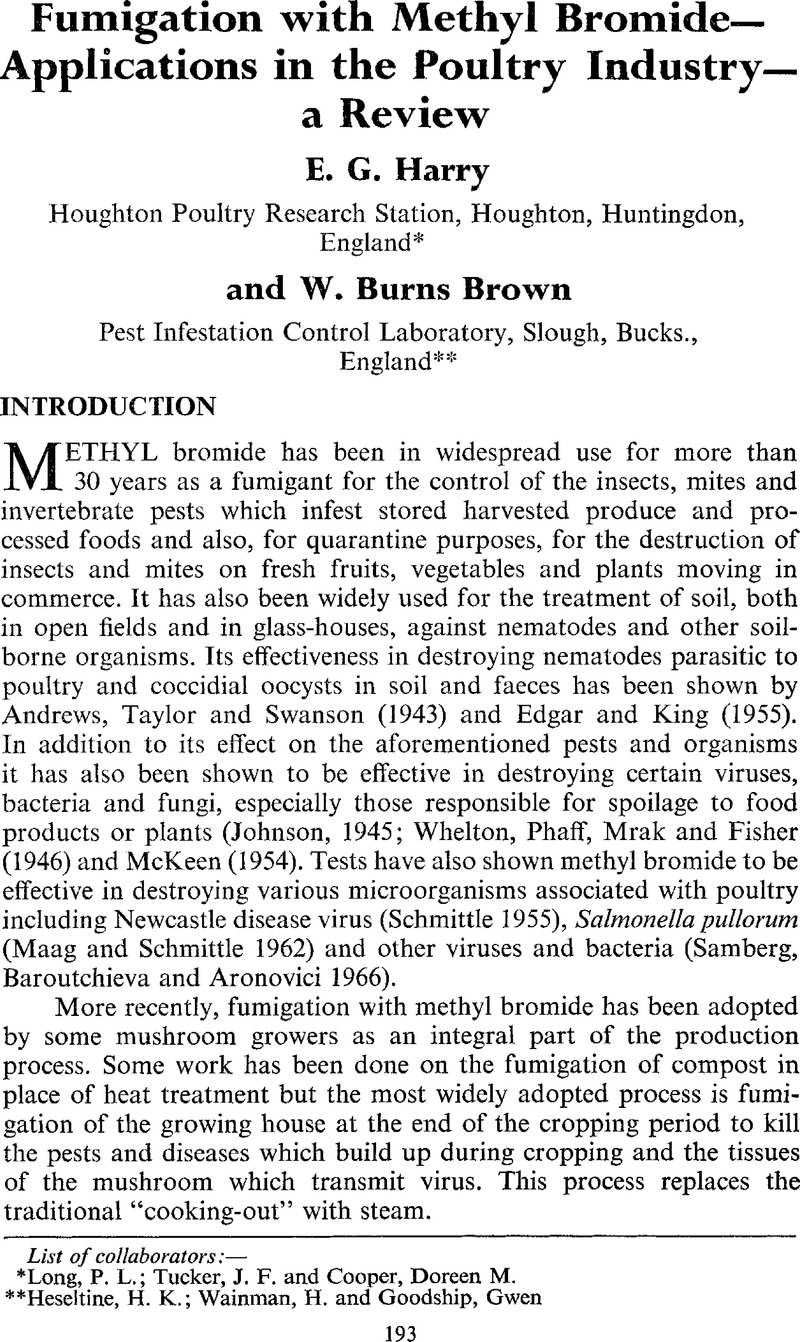Crossref Citations
This article has been cited by the following publications. This list is generated based on data provided by Crossref.
Tucker, J.F.
Harry, E.G.
and
Wainman, H.E.
1975.
The Effect of Fumigation With Methyl Bromide or Formaldehyde on the Infectivity of Poultry House Litter Naturally Contaminated With Salmonella Virchow.
British Veterinary Journal,
Vol. 131,
Issue. 4,
p.
474.
Yvoré, P.
1976.
Revue sur la prevention des coccidioses en aviculture.
Avian Pathology,
Vol. 5,
Issue. 4,
p.
237.
Carmi, Y.
and
Ashbel, G.
1978.
Disinfection of Poultry Manure by Fumigation with Methyl Bromide.
World's Poultry Science Journal,
Vol. 34,
Issue. 2,
p.
65.
Harry, E.G.
1978.
Air pollution in farm buildings and methods of control: A review.
Avian Pathology,
Vol. 7,
Issue. 4,
p.
441.
Griffiths, Nerys M.
Hobson‐frohock, A.
Land, D. G.
Levett, Julia M.
Cooper, Doreen M.
and
Rowell, J. G.
1978.
Fumigation of poultry food with methyl bromide: Effects on flavour and acceptability of broiler meat.
British Poultry Science,
Vol. 19,
Issue. 4,
p.
529.
Frahn, John L.
1979.
Electrophoresis of halides and phosphate on DEAE-cellulose application to elemental analysis of organic compounds by sodium fusion.
Journal of Chromatography A,
Vol. 168,
Issue. 2,
p.
407.
Williams, J. E.
1981.
Salmonellas in Poultry Feeds—A Worldwide Review.
World's Poultry Science Journal,
Vol. 37,
Issue. 2,
p.
97.
Alexeeff, George V.
and
Kilgore*, Wendell W.
1983.
Residue Reviews.
p.
101.
Williams, R. B.
1997.
Laboratory tests of phenolic disinfectants as oocysticides against the chicken coccidium Eimeria tenella.
Veterinary Record,
Vol. 141,
Issue. 17,
p.
447.
Cozad, Ann
and
Jones, Rhonda D.
2003.
Disinfection and the prevention of infectious disease.
American Journal of Infection Control,
Vol. 31,
Issue. 4,
p.
243.
Nwaichi, Eucharia O.
Essien, Eka B.
and
Ibe, Uzoamaka Chinonso
2019.
Protective and curative effects of Beta vulgaris on pesticide dimethyl 2,2-dichlorovinyl phosphate-exposed albino rats.
AAS Open Research,
Vol. 2,
Issue. ,
p.
26.
Nwaichi, Eucharia O.
Essien, Eka B.
and
Ibe, Uzoamaka Chinonso
2019.
Protective and curative effects of Beta vulgaris on dimethyl 2,2-dichlorovinyl phosphate-exposed albino rats.
AAS Open Research,
Vol. 2,
Issue. ,
p.
26.



